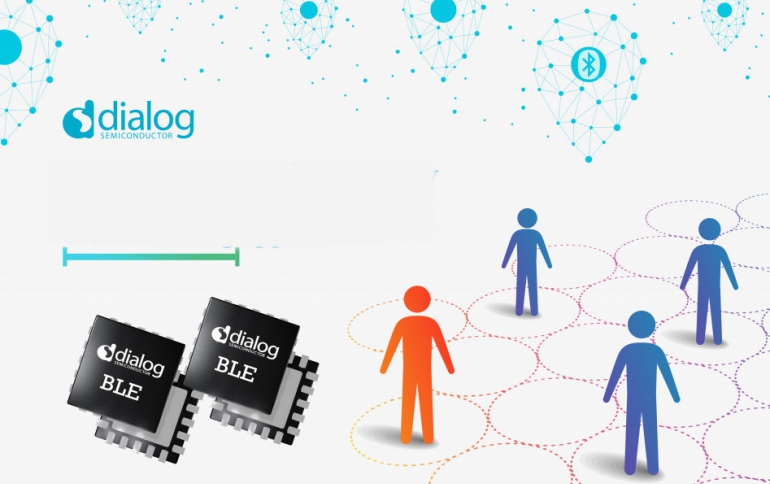
Dialog Semiconductor Adds New Features to Bluetooth SoCs to Enabling Highly Accurate Tracing
Dialog Semiconductor plc announced a new Wireless Ranging (WiRa) Software Development Kit (SDK) that adds highly accurate and reliable distance measurement capabilities to its DA1469x family of BLE SoCs to support new social distancing norms.
The need for more accurate and reliable distance measurement and tracing technology has become even more critical in the wake of COVID-19. With businesses across the globe planning a controlled reopening of their workplaces, they are looking for solutions that will help guarantee safe distances between employees and improved contact tracing capabilities, to ensure safe working environments and peace of mind for employees.
Current Bluetooth low energy market solutions for distance measurement and positioning are based on measuring the strength or power of the received radio signal, known as Received Signal Strength Indicator (RSSI) measurements. However, these received power measurements may be inherently flawed due to the sensitivity of objects in the radio path blocking or reflecting the radio signals.
Dialog says its new Wireless Ranging SDK succeeds where RSSI falls short, leveraging a proprietary radar-like implementation for highly improved distance measurement accuracy between BLE connected devices. By interleaving Bluetooth LE data packets with constant tone frequency exchanges, the DA1469x on-chip 2.4 GHz radio generates the signals needed for phase-based ranging. The high resolution on-chip sampling of radio waves provides high quality IQ samples that form the input for distance determination. Data processing algorithms filter the data for noise, interference and reflections, to produce the shortest over-the-air signal path length as an accurate distance output.
The BLE compliant stack and WiRa software implementation that Dialog offers does not require hardware adaptations or an external host processor, ensuring co-existence between the Bluetooth communication and the distance measurement process.
Several companies are beginning to have workers put on smartwatches, lanyards or devices that are outfitted with technology aimed at preventing further outbreaks of the novel coronavirus. Other devices connect to apps that log when two people spend considerable time near other, and authorities can use that data in deciding whom else to quarantine if a worker gets infected.




















